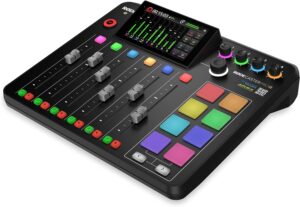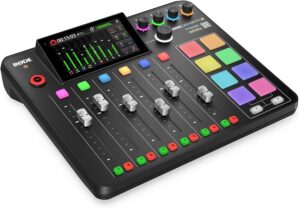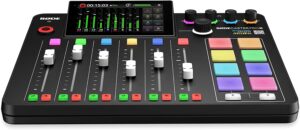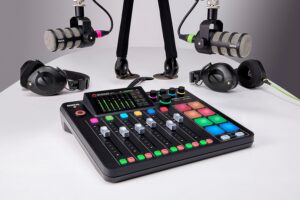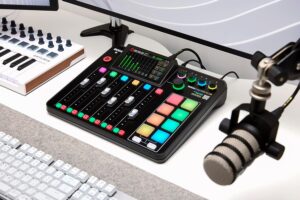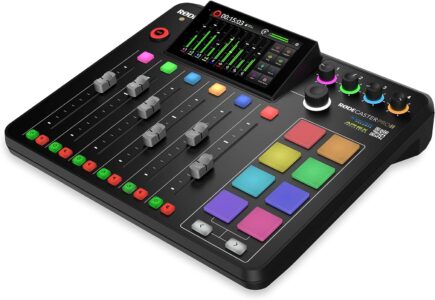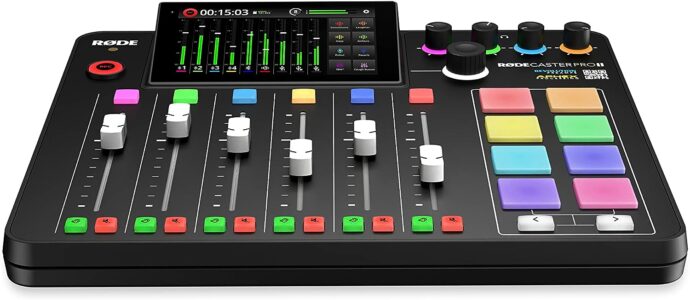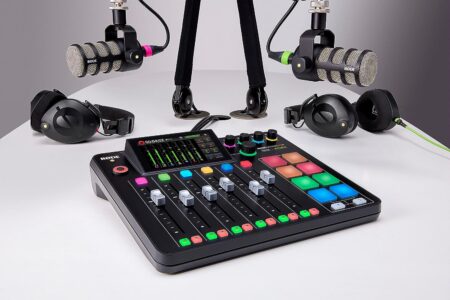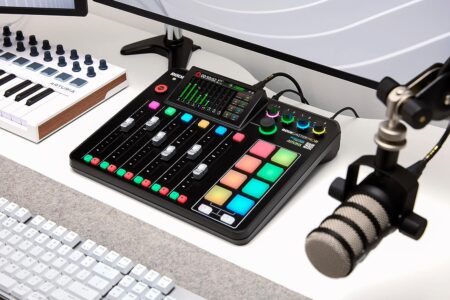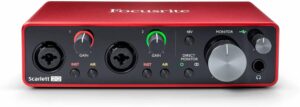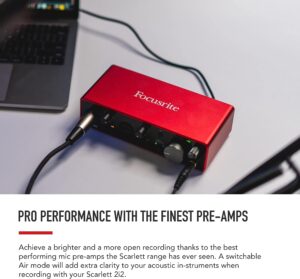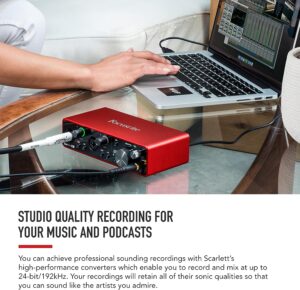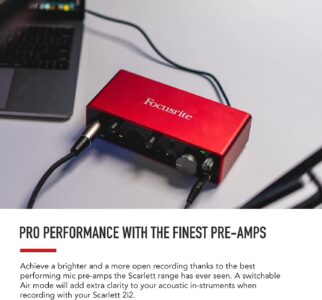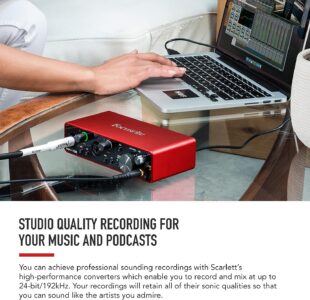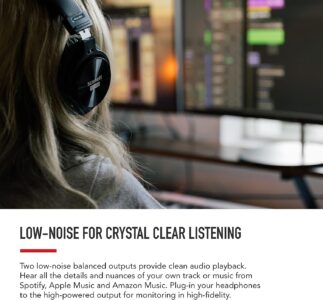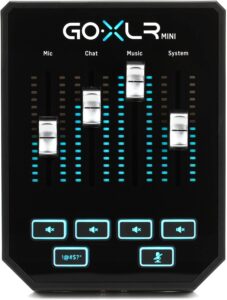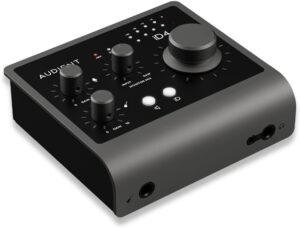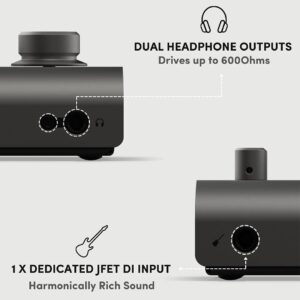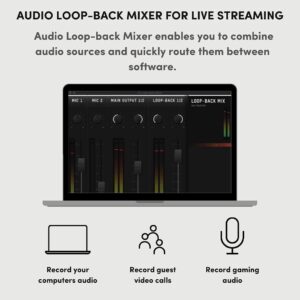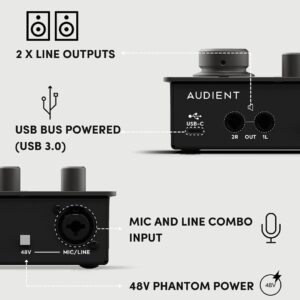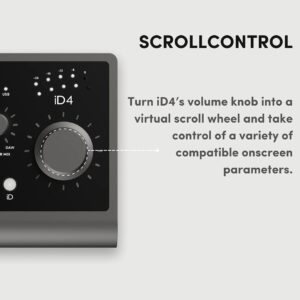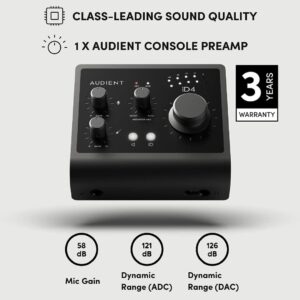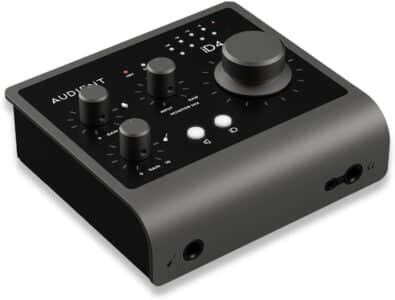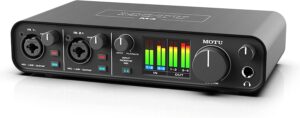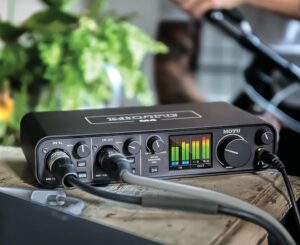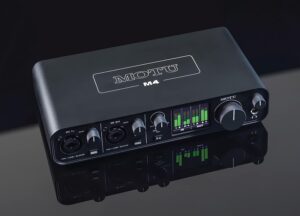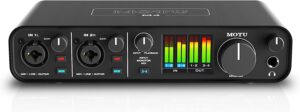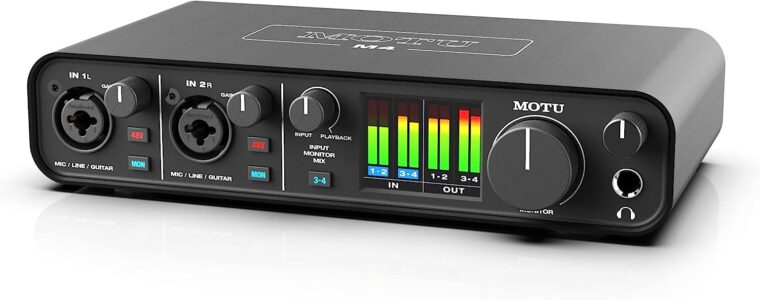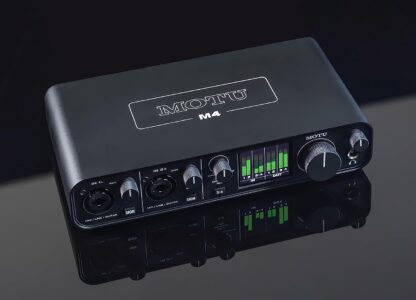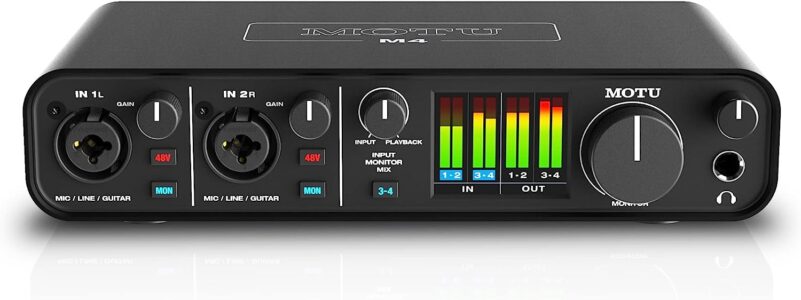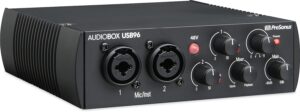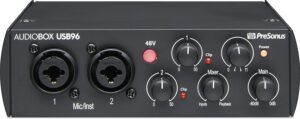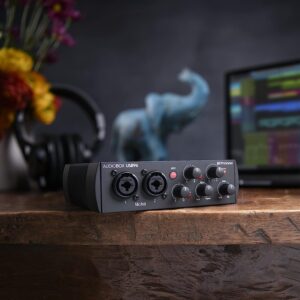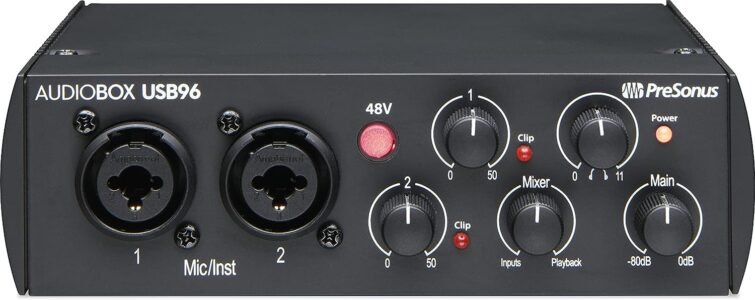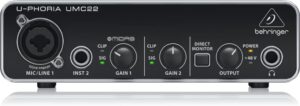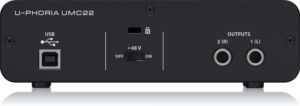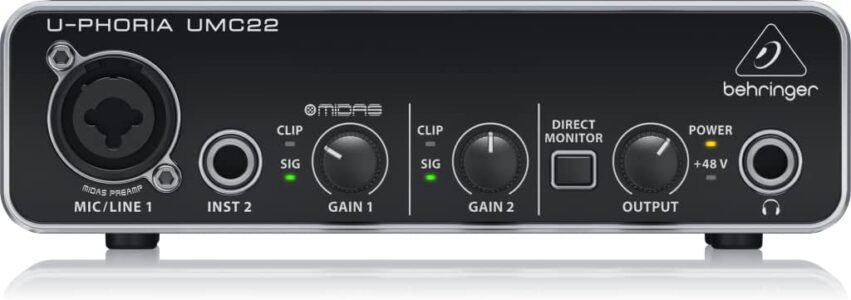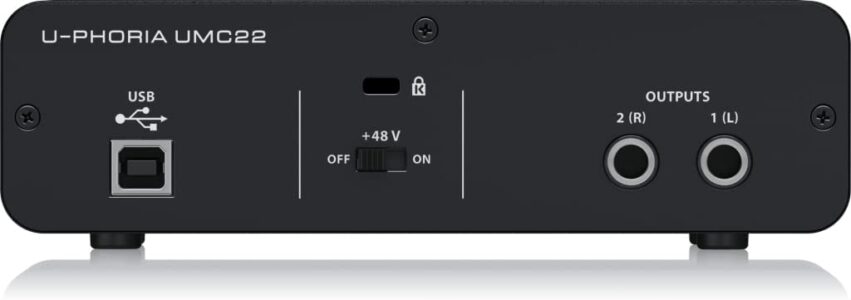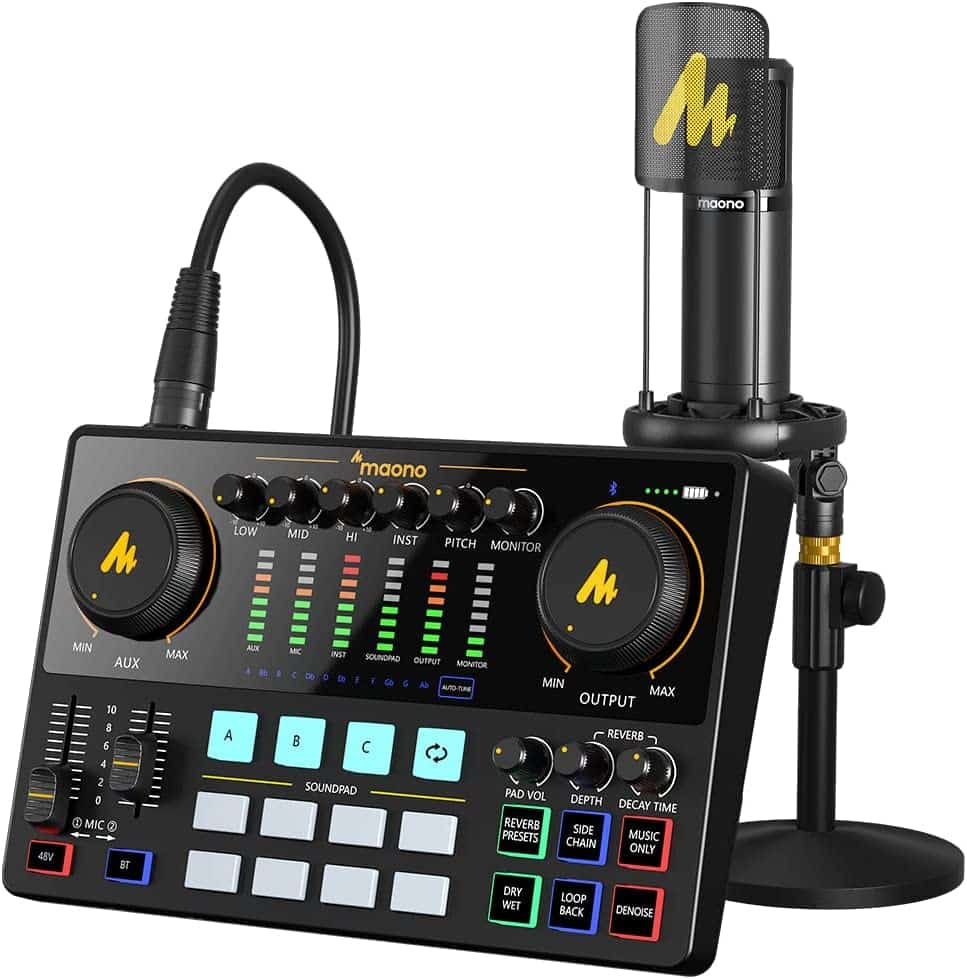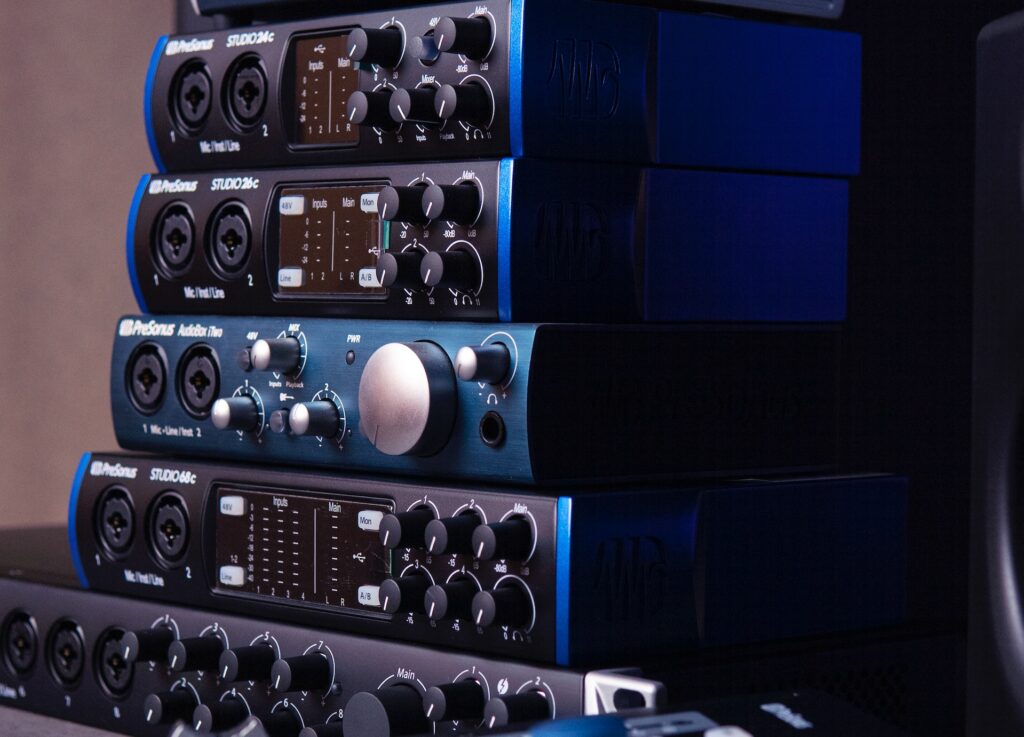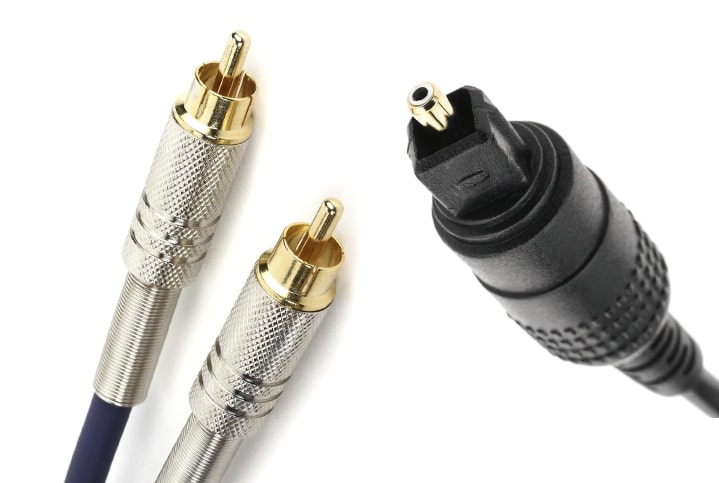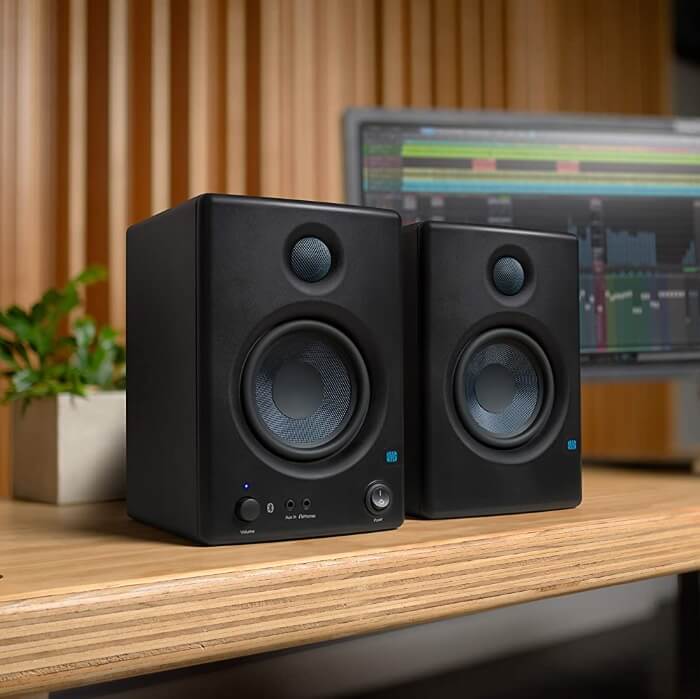What is an Audio Interface?
An audio interface is a device that acts as an intermediary between your computer and your microphone or instrument. It translates the analog signals from your microphone or musical instrument into digital signals that your computer can understand and vice versa.
Why Do You Need an Audio Interface for Streaming?
You might wonder, “Why can’t I directly plug my microphone into my computer?” Most computers’ built-in sound cards cannot handle professional-grade audio recording or streaming. An audio interface provides:
- High-Quality Sound: It ensures that the sound being streamed is of the highest quality, free from distortions and noises that can arise from low-quality sound cards.
- Multiple Inputs and Outputs: It allows you to connect several devices simultaneously, which is beneficial if you’re streaming with multiple instruments or have guests on your podcast or show.
- Phantom Power: Many professional microphones require phantom power to function, which is something a regular computer sound card cannot provide.
Factors to Consider When Choosing an Audio Interface for Streaming
Number of Inputs and Outputs: Decide on the number of instruments or microphones you’ll connect simultaneously. A two-input interface like the Focusrite Scarlett 2i2 might suffice for solo streamers. But if you plan on having multiple guests or instruments, consider interfaces like the Rode Rodecaster Pro.
Compatibility with Your Computer: Ensure the interface you’re considering is compatible with your computer’s operating system and DAW (Digital Audio Workstation). Also, check the type of connection – USB, Thunderbolt, etc.
Latency: Latency refers to the delay between the input (like speaking into the microphone) and the time it’s heard on the output. Low latency is crucial for streaming; otherwise, it can lead to audio-video sync issues.
Preamp Quality: The preamp boosts the signal from your microphone. A good quality preamp ensures the sound is clear, loud, and free of distortions.
Form Factor and Build: Portability might be crucial if you’re a mobile streamer or podcaster. Devices like the Audient iD4 are compact and easy to carry. However, robustness and build quality might be more critical if your setup is stationary.
Budget: As with most equipment, there’s a broad range in terms of pricing. It’s essential to find a balance between your needs and your budget.
Understanding Digital Audio Quality: Bit Depth and Sample Rate
Two primary factors determine digital audio quality:
- Bit Depth: This refers to the number of bits of information in each sample, which directly relates to the resolution of each sample. Typical bit depths include 16-bit (CD quality) and 24-bit. Higher bit depths capture more detail in the audio but also require more storage space.
- Sample Rate: This refers to the number of samples of audio taken per second. Typical sample rates include 44.1 kHz (CD quality), 48 kHz, 96 kHz, and even 192 kHz. A higher sample rate captures a broader range of frequencies and provides a more detailed sound.
A combination of 24-bit and 48 kHz is generally regarded as high-quality for streaming. However, it’s always a good idea to go slightly above the minimum requirements to ensure future-proofing.
The Importance of Software Integration
The hardware is just half the battle. How an audio interface integrates with your chosen software can significantly influence your streaming experience.
- Drivers and Stability: Ensure that the audio interface has stable drivers for your operating system. Unstable drivers can lead to crashes, glitches, and other unwanted issues during live streams.
- DAW Compatibility: If you’re into music streaming or podcasting, your interface should be compatible with popular DAWs like Ableton Live, Pro Tools, or FL Studio.
- Real-time Audio Processing: Some interfaces, like the GoXLR range, offer real-time audio effects, which can be a significant advantage for streamers.
Additional Features to Consider
- Direct Monitoring: This allows you to hear yourself without any latency, which is essential for singers or instrumentalists.
- Expandability: Some audio interfaces can be expanded with additional inputs and outputs, which can be a boon if you plan to grow your setup.
- Bundled Software: Some audio interfaces come bundled with DAWs or plugins, providing added value for money.
- Onboard DSP: Onboard Digital Signal Processing can provide real-time audio effects without taxing your computer’s CPU.
A Word on Connectivity
The type of connection your audio interface uses to connect to your computer can influence speed, latency, and overall performance. Standard connection types include:
- USB: Most common and compatible with both PCs and Macs. Devices like the Presonus AudioBox USB 96 use this connection.
- Thunderbolt: Offers faster data transfer rates than USB, leading to reduced latency. However, ensure your computer has a Thunderbolt port.
- FireWire: Less common these days and being phased out in favor of USB and Thunderbolt.
- PCIe: Used for internal sound cards, offering the fastest data transfer rates but requires installation inside your computer.
Consider Future Needs
While getting an audio interface that meets your current needs is crucial, it’s also wise to think ahead. If you foresee expanding your streaming setup, opting for a more advanced audio interface now might save you from having to upgrade too soon.
At its core, streaming is about connecting with your audience, and clear, high-quality audio is a crucial element of that connection. An audio interface is the backbone of your audio setup, ensuring that your voice, music, or any other sound reaches your audience in the best possible quality.
By considering the factors laid out in this guide and aligning them with your specific needs and budget, you’ll be well-equipped to make an informed decision. Remember, the “best” audio interface isn’t necessarily the most expensive or feature-packed; it’s the one that best serves your unique streaming requirements.







